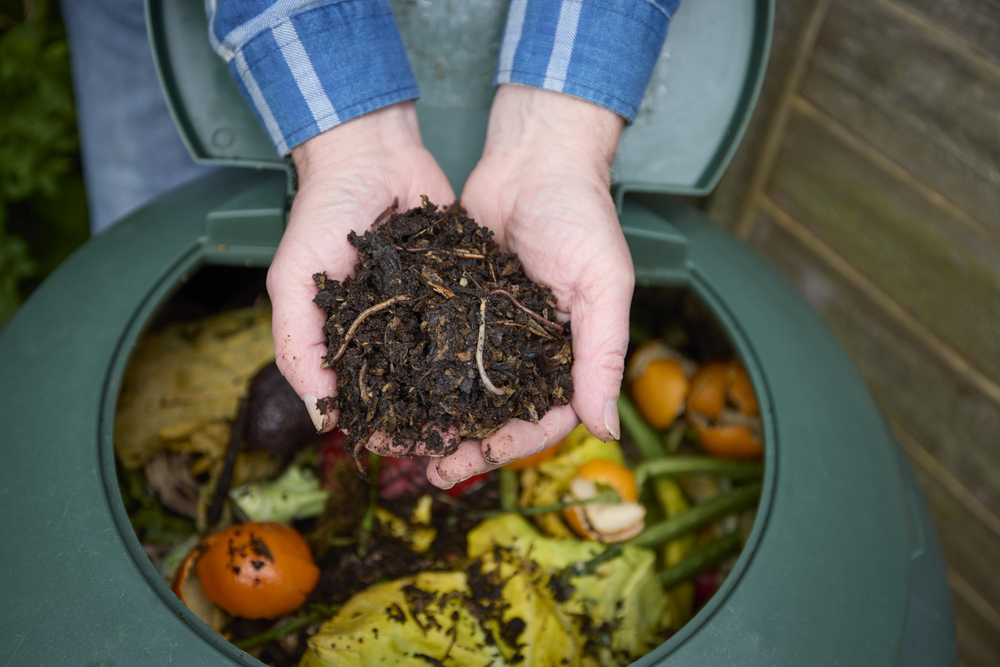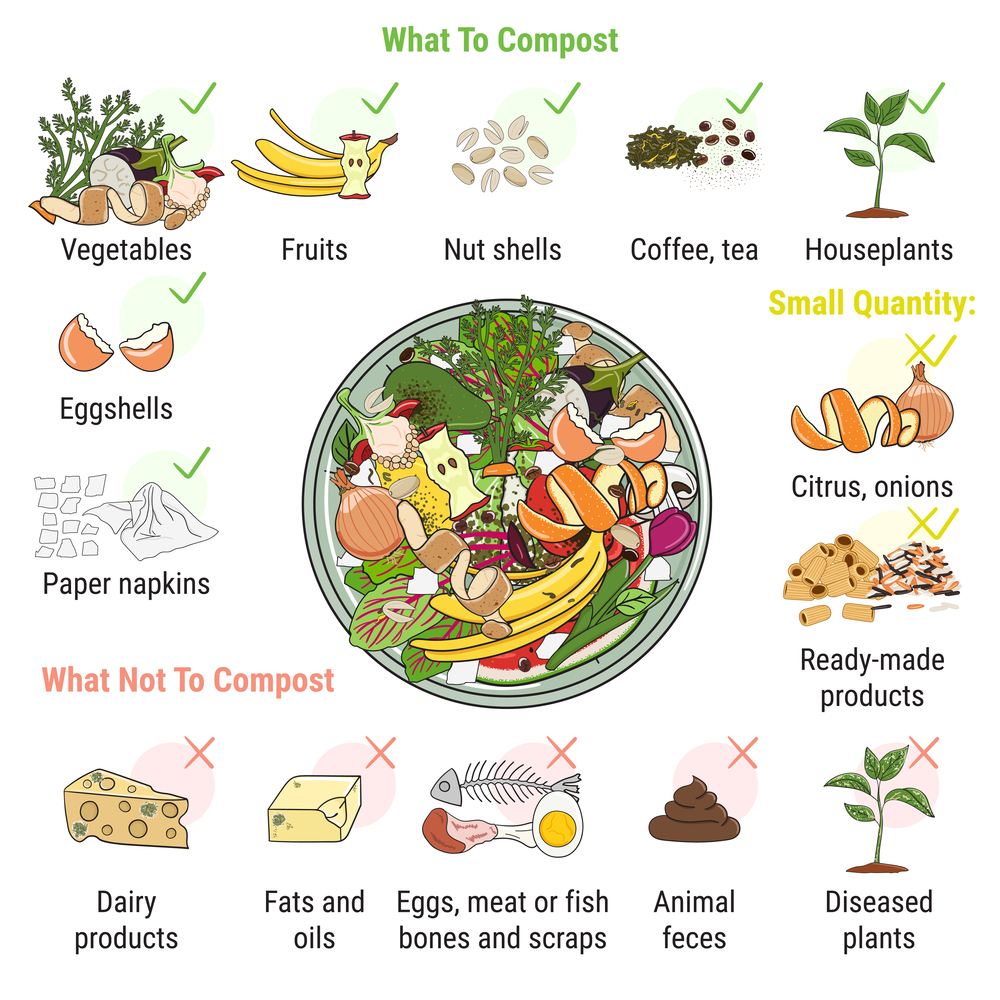
If you’ve been curious about composting but don’t know where to start, this guide is here to help. Composting is easier than you might think, and the benefits are massive, not just for your garden but for the environment too.
Whether you’re a green thumb or a complete beginner, let’s dive into everything you need to know to get started on your composting journey.
What is composting?
Composting is the natural process of recycling organic materials like food scraps and garden waste into a nutrient-rich soil conditioner. It’s nature’s way of breaking things down, turning what you might think of as rubbish into something valuable for your plants. This process involves the work of microorganisms, worms, fungi, and bacteria that break down the material into humus, which can be used to improve soil quality.
Think of composting as giving back to the earth. All those kitchen scraps and garden trimmings you’d normally toss in the bin can become a powerful resource for your garden.
Why try composting?
There are so many reasons to start composting, and the best part is that it’s not just good for the environment, it’s good for you too. Here are just a few of the key benefits:
-
Reduce waste: Did you know that food scraps and garden waste make up about half of the rubbish Australians send to landfill? By composting, you can significantly cut down the amount of waste you produce, reducing the strain on landfill sites and cutting greenhouse gas emissions.
-
Save money: Composting is like having your own little fertiliser factory at home. Instead of buying expensive soil conditioners and mulch, you can create your own for free.
-
Healthier plants: Compost enriches your soil, helping plants grow stronger and healthier. It improves soil structure, retains moisture, and supplies nutrients that plants need to thrive.
-
Easy to do: Whether you have a small balcony, a big backyard, or no outdoor space at all, there’s a composting method that will work for you.
-
Pro Tip: Check with your local council about their green waste collection service. Many councils turn green waste into mulch or compost for public use, so you can still make a positive impact even if you don’t compost yourself.
Choosing a composting method
Choosing the right composting method for your needs is crucial to ensure a successful composting experience. There are several methods to choose from, each with its own benefits and considerations.
-
Outdoor composting: Ideal for those with a large yard and a significant amount of organic waste. This method involves creating a compost pile or using a compost bin in your backyard. It’s perfect for handling garden waste, grass clippings, and kitchen scraps.
-
Vermicomposting: Uses worms to break down food scraps and is a great option for small-scale composting. Vermicomposting bins can be kept indoors or outdoors and are particularly effective at processing fruit and vegetable scraps.
-
Bokashi composting: Uses microorganisms to ferment organic matter and is a good choice for those who want to compost meat and dairy products. Bokashi bins are typically kept indoors and can handle a wider variety of food waste compared to traditional composting methods.
Choosing a location
One of the first steps to starting composting is choosing the right location. Where you set up your compost pile or bin can make a big difference in how effective and easy it is to maintain.
If you have a backyard, look for a spot that’s:
-
Shady but not too shady: A bit of sun helps speed up the composting process, but too much can dry it out.
-
Accessible: You’ll want a spot that’s easy to reach when you’re taking out kitchen scraps or turning the pile.
-
Well-drained: Good drainage is important to prevent water from pooling at the bottom of your compost pile.
For those with limited space, consider options like a compost tumbler or even a small indoor composting bin. You can even try bokashi bins, which use a special fermentation process to break down food waste.
Setting up your compost bin
Setting up your compost bin is an essential step in starting your composting journey. Here are some tips to help you set up your compost bin effectively:
-
Choose a location: Select a spot for your compost bin that is well-ventilated, accessible, and out of direct sunlight. Good airflow and moderate temperatures will help speed up the composting process.
-
Select a bin: Choose a compost bin that is suitable for your composting method and space constraints. Consider factors such as size, material, and aeration. Compost bins come in various shapes and sizes, from large outdoor bins to compact indoor models.
-
Add bedding: Start by adding a 4-6 inch layer of bedding material, such as shredded paper or coconut coir, to the bottom of your compost bin. This helps with aeration and moisture retention.
-
Add organic waste: Begin adding your organic waste, such as fruit and vegetable scraps, grass clippings, and coffee grounds, to the compost bin. Remember to balance green and brown materials to maintain a healthy compost pile.
-
Maintain moisture: Keep the compost bin moist, like a damp sponge, to facilitate the composting process. If the pile is too dry, decomposition will slow down; if it’s too wet, it can become smelly and attract pests.
By following these steps, you’ll create an optimal environment for your composting process, ensuring your organic waste breaks down efficiently.

Know what to compost
To create a healthy, balanced compost pile, you’ll need a mix of two main types of materials: greens and browns.
-
Greens are your wet, nitrogen-rich materials. These include fruit and vegetable scraps, coffee grounds, tea bags, grass clippings, and fresh garden trimmings. They provide the nutrients that help break everything down.
-
Browns are dry, carbon-rich materials. These include dry leaves, twigs, cardboard, shredded paper, and straw. Browns help aerate the pile and give microorganisms the energy they need to do their job.
The golden rule is to aim for a 50/50 mix of greens and browns. Too many greens can make your compost pile soggy and smelly, while too many browns can slow down the decomposition process. Keep a stash of browns, like shredded newspaper or dry leaves, on hand to balance out your pile when needed.
What to avoid
Not everything belongs in your compost pile. Adding the wrong materials can attract pests, cause unpleasant odours, or even harm your plants. Here’s what to leave out:
-
Meat and dairy: These can attract pests like rodents and can take a long time to break down.
-
Oily or greasy foods: These also attract pests and don’t break down well in a typical compost pile.
-
Pet waste: While some compost systems can handle pet waste, it’s generally best avoided due to the risk of harmful bacteria.
-
Weeds with seeds: If your compost doesn’t get hot enough, the seeds may survive and sprout in your garden.
-
Diseased plants: These can spread diseases to your healthy plants when you use the compost.
-
Chemically treated materials: Things like pesticide-treated grass clippings or glossy paper don’t belong in your pile.
Being selective about what you compost ensures a clean, healthy final product.
Troubleshooting common issues
Common issues can arise during the composting process, but don’t worry, they can be easily resolved. Here are some troubleshooting tips to keep your compost pile healthy and productive:
-
Odours: If your compost bin is emitting a strong odor, it may be due to too many green materials or not enough brown materials. Add more brown materials, such as shredded paper or dried leaves, to balance out the carbon-to-nitrogen ratio. Turning the pile can also help introduce oxygen and reduce smells.
-
Pests: If you notice pests, such as rodents or flies, in your compost bin, it may be due to too much food waste or not enough aeration. Add more bedding material and turn the compost pile regularly to resolve the issue. Ensure you’re not adding meat, dairy, or oily foods, which can attract pests.
-
Slow decomposition: If your compost is not breaking down quickly enough, it may be due to too much carbon-rich material or not enough moisture. Add more green materials, such as fruit and vegetable scraps, and ensure the compost bin is kept moist. Regularly turning the pile can also help speed up the composting process.
By addressing these common issues, you can maintain a healthy compost pile and ensure your organic waste breaks down efficiently.
Layer the material
Layering your compost materials is an easy way to keep the pile healthy and encourage decomposition. Think of it like making a lasagna for your garden. Here’s how to do it:
-
Start with a base layer of coarse browns like sticks or straw to create good airflow.
-
Add a layer of greens, such as fruit and vegetable scraps.
-
Cover with a layer of browns, like shredded paper or dry leaves.
-
Continue alternating layers of greens and browns as you add new materials.
-
Every now and then, mix your pile to introduce oxygen and help everything break down more evenly. This is especially important if you notice a smell, mixing can help reset the balance.
How to know when it’s ready
Compost doesn’t happen overnight, but it’s worth the wait. Depending on the materials you use and how often you turn the pile, your compost could take anywhere from 2-6 months to fully decompose.
You’ll know your compost is ready when:
-
It’s dark, crumbly, and has an earthy smell.
-
Most of the original materials are unrecognisable.
-
It no longer feels hot to the touch (a sign that the decomposition process is complete).
Once it’s ready, spread it around your garden beds, mix it into your soil, or use it as mulch to give your plants a nutritious boost.
Partner with Great Aussie Patios for your outdoor space
Ready to take your outdoor space to the next level? Whether you’re composting in the garden or just enjoying your backyard, a great patio makes all the difference.
At Great Aussie Patios, we specialise in building beautiful, durable patios designed to suit your lifestyle and enhance your outdoor living space. From custom designs to expert installation, we’re here to help you create the perfect space for relaxing, entertaining, or getting stuck into your garden projects.
Contact us today to create your ultimate outdoor space.